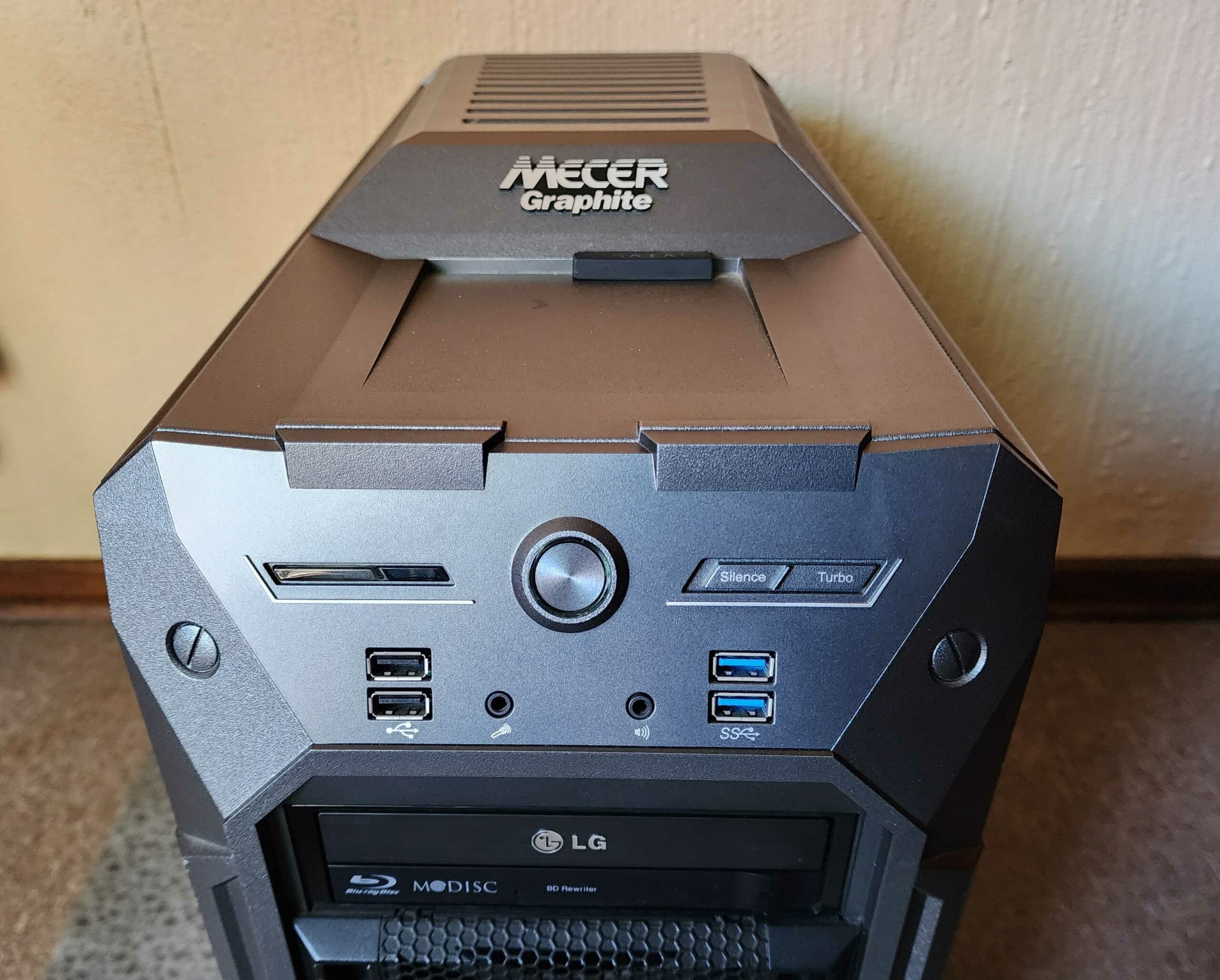Gadget of the Week
Gadget of the Week: This
10-year-old PC still delivers
A decade ago, Mustek built a state of the art desktop PC. Today, it is still an office workhorse, writes ARTHUR GOLDSTUCK.
What is it?
In 2013, Mustek set up a conceptual desktop computer combining Mecer parts, Intel processor and Microsoft software, for us to test the state of the art in PCs for business use.
Ten years later, that PC is still in use, and we put it through its paces to understand whether a decade-old machine still had useful life left in its mechanical innards.
Back in 2013, desktop computers were still the preferred choice for high-performance machines for gaming, video editing, and design work. Ours was state of the art, but not excessively so: equipped with an i7 4770k Intel quad-core processor, an AMD Radeon HD7700 GPU, 8GB of RAM, a 64GB SSD (solid state drive), and a 1TB hard drive. Those weren’t the highest-end components available in the market, but investing in more powerful insides would have made sense only to high-end gamers and designers.
The Intel i7 4770k was a top-of-the-line CPU when it was first released, with a base clock speed of 3.5 GHz and the ability to overclock to 4.4 GHz. This means the processor can still handle most tasks that users might throw at it today. Its four cores and eight threads allow for efficient multitasking and smooth performance, even when running multiple applications simultaneously.
The AMD Radeon HD7700 GPU was also a high-end graphics card in 2013, and today can still handle many modern games and applications. With 1GB of GDDR5 memory and DirectX 11 support, it delivers high-quality graphics and smooth performance. The 8GB of RAM struggles with highly memory-intensive tasks, but it remains a decent amount of memory for the average user, can still handle everyday applications, and copes with light gaming.
The 64GB SSD drive looks like a small amount of instantly accessible storage by modern standards, but the fact that it is paired with a 1TB regular hard drive means that it does not have to be the primary storage component. That further means it can be used as a fast boot drive or for storing frequently used applications, while the 1TB drive still delivers ample space for files, photos, videos, and heavyweight documents. Few PCs even today have a bigger hard drive.

The monitor, too, was state-of-the-art: a Mecer 23.6″ 16 x 9 IR Optical 2-Point Touch LED Wide Monitor, with 1920 x 1080 full HD resolution, with built-in speakers and supporting DVI and HDMI.
We upgraded the machine from Windows 8, the operating machine current in 2013, to
Windows 11, without any difficulties. Overall, it’s obviously not the fastest or most powerful machine around now, but is still a capable performer for many everyday tasks. With a few upgrades, such as additional RAM and a larger SSD, it could be used for another decade. Even as it is, it is competent for any
web browsing, word processing, and light gaming.
The monitor is a different story: it remains state-of-the art, and the specs remains adequate for almost any use to which we put it, including high-end gaming and intensive research analysis with multiple spreadsheets and graphs open at the same time on the expansive screen. The bottom line is that, yes, a 10-year-old desktop PC that was state-of-the-art at the time is still an office workhorse today.
What does it cost?
The machine cost around R20,000 to assemble in 2013 – at the time a high price for a desktop PC. While the exact versions of some of components are not available from the suppliers today, sourcing them as used items or old stock would price the machine at anything from half to two-thirds of that price. A new machine with the current equivalent of those components would cost around the same as in 2013, meaning that, in inflation terms, it has come down dramatically in price – the equivalent to paying less than half of what you paid in 2013. However, you would eat into that saving with more RAM and a larger SSD, and multiply the price if you went beyond office-type needs and bought the fastest processors
and graphics cards on the market.
Why does it matter?
A powerful and up-to-date computer system can enhance the productivity and efficiency of a business, and future-proofing an office PC can ensure it will handle business demands for many years. This may be expensive upfront but saves money in the long run. While all our old machine’s components are upgradeable, the monitor would not need replacing, even ten years later.
What are the biggest negatives?
- The high-end in solid state drives in 2013 would be regarded as tiny today.
- It’s a large machine, requiring far more desktop real estate than a laptop.
What are the biggest positives?
- The processor can still handle all everyday tasks, and the graphics card can still cope with everyday gaming.
- The 1TB hard drive may have been cutting edge a decade ago yet is still respectable Today.
- The monitor is still up to any task to which we put it and can be connected to any other computer.
- Ultimately, it reveals that investing in a state-of-the-art desktop machine still pays dividends a decade later
- Arthur Goldstuck is founder of World Wide Worx and editor-in-chief of Gadget.co.za.
Follow him on Twitter on @art2gee

















